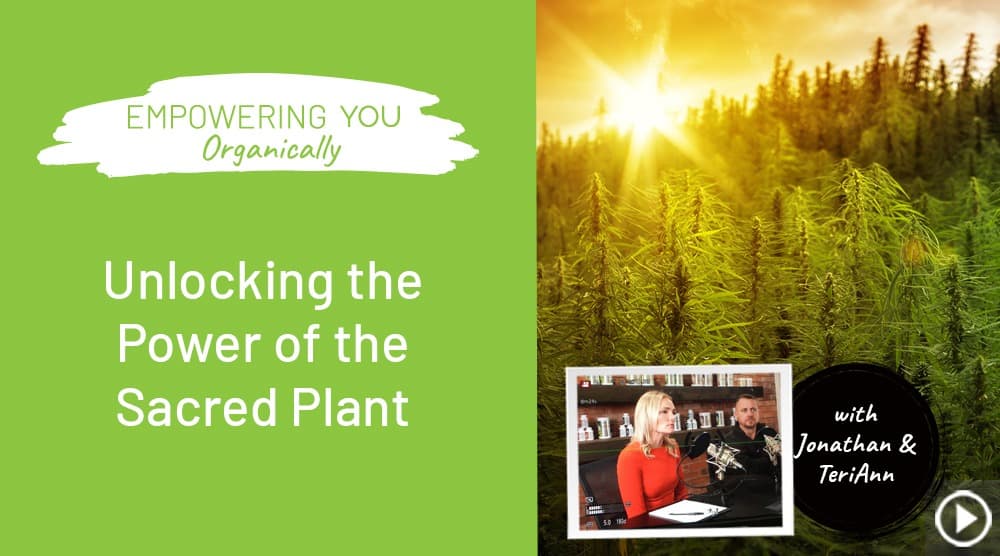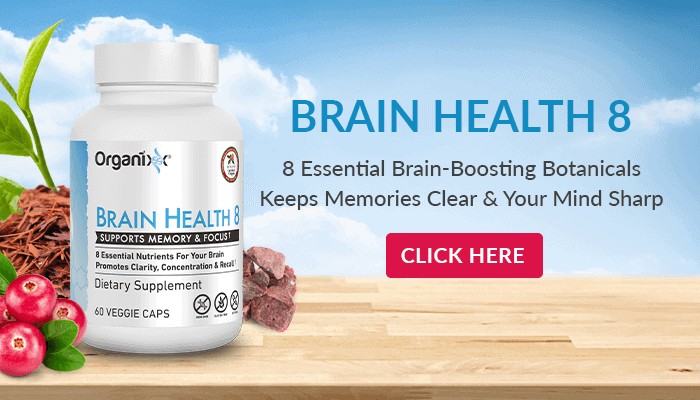Empowering You Organically – Season 12 – Episode 110
Title: Unlocking the Power of the Sacred Plant
Hosts: Jonathan Hunsaker & TeriAnn Trevenen
Guest: Lia Hawks
Description: The sacred plant has been used for 5,000+ years to prevent, treat, and even beat hundreds of debilitating conditions and diseases. Up until 80 years ago, the sacred plant was readily available and used for countless ailments and chronic pain. But then, during the rise of the modern medical system, the sacred plant was unjustly suppressed by lawmakers who feared its healing powers, and sought to eliminate it so it could sell patented synthetic drugs for profit. It’s been hidden and forbidden ever since.
* * *
FEATURED CHALLENGE
- 8 brain-boosting botanicals sourced from the Amazon rainforest
- Helps maintain healthy brain inflammation levels
- Encourages new brain cell growth
- Supports healthy neurons for better memory power
- Protects the brain from free radical damage
- Aids healthy blood flow and oxygen levels
- Promotes a calm, focused mind and balanced moods
Lia Hawks
The Sacred Plant is a mission centered company started in April 2017. Since their beginning, their team has been dedicated to understanding, helping, and empowering patients, loved ones, caregivers, and more. Helping to ignite the conversation around knowing there are powerful, natural, safe options for them to live a healthy, happy, and pain-free life.
Lia Hawks is a founding team member, holding the role of Director of Content. What is most important to note is the work she has done alongside the experts, patients, physicians, researchers, lawyers, nurses, advocates, and more to get an essential understanding of just how The Sacred Plant can make a difference in the lives of so many who once had lost hope.
What is The Sacred Plant? Cannabis
The sacred plant has been used for 5,000+ years to prevent, treat, and even beat hundreds of debilitating conditions and diseases. Up until 80 years ago, the sacred plant was readily available and used for countless ailments and chronic pain. But then, during the rise of the modern medical system, the sacred plant was unjustly suppressed by lawmakers who feared its healing powers, and sought to eliminate it so it could sell patented synthetic drugs for profit. It’s been hidden and forbidden ever since.
CBD & THC
The two most found cannabinoids in the plant out of over 100+ others.
CBD is known for:
Anti-inflammation
Anti-Anxiety
Energy Boosting
Stabilizes Cancer
Bone density and formation
Various others…
THC is known for:
Kills cancer cells indirectly through apoptosis restart
Pain reliever
Muscle Spasm
Depression
Body relaxation
Ratios
3 parts CBD to 1 part THC will remove the psycho active feeling of the THC. Whereas, a 20:1 CBD:THC would negate all benefit of THC that your body could benefit from.
What is the Endocannabinoid System?
Our body has the ability to heal itself, however when our immune system is compromised, that ability to heal is turned off.
Through our Endocannabinoid System we can optimize our body’s response. Kick starting healing, repair, and feeling well!
The endocannabinoid system (ECS) is a complex cell-signaling system identified in the early 1990s by researchers exploring THC, a well-known cannabinoid. Cannabinoids are compounds found in cannabis.
Endocannabinoids, also called endogenous cannabinoids, are molecules made by your body. They’re similar to cannabinoids, but they’re produced by your body.
Experts have identified two key endocannabinoids so far:
anandamide (AEA)
2-arachidonoylglyerol (2-AG)
These help keep internal functions running smoothly. Your body produces them as needed, making it difficult to know what typical levels are for each.
Endocannabinoid Receptors
These receptors are found throughout your body. Endocannabinoids bind to them in order to signal that the ECS needs to take action.
There are two main endocannabinoid receptors:
- CB1 receptors, which are mostly found in the central nervous system
- CB2 receptors, which are mostly found in your peripheral nervous system, especially immune cells
Endocannabinoids can bind to either receptor. The effects that result depend on where the receptor is located and which endocannabinoid it binds to.
For example, endocannabinoids might target CB1 receptors in a spinal nerve to relieve pain. Others might bind to a CB2 receptor in your immune cells to signal that your body’s experiencing inflammation, a common sign of autoimmune disorders.






